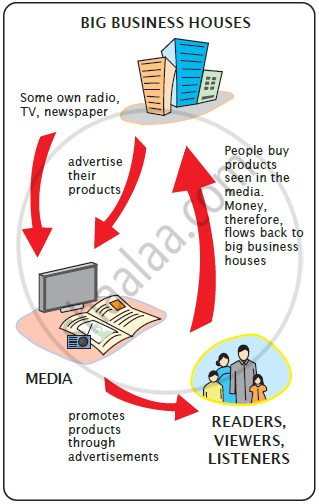Advertisements
Advertisements
प्रश्न

Are the above stories in the two newspapers similar? And if not, why not? What, in your view, are the similarities and the differences?
उत्तर
- The stories in these two newspapers are not similar in totality.
- The stories are not similar because neither of the two newspapers has given a balanced news report. It means they are not as independent as the media should be for giving a balanced news report for the success of democracy.
- Similarities: Similarities in my view are that both the newspapers have reported on the same topic i.e., ‘closure of factories. In both the newspapers, the protest by the factories’ owners and workers is highlighted.
- Differences: The news report in the ‘News of India’ has pointed out that protestors were disrupting traffic and polluting the city continuously. But, the story in the India Daily’ has related the protest to the livelihoods of the workers and factory owners because of the closure of the factories.
APPEARS IN
संबंधित प्रश्न
In what ways does the media play an important role in a democracy?
Can you give this diagram a title? What do you understand about the link between media and big business from this diagram?

Very Short Type Question:
What are the various ways through which people express their dissatisfaction to any of the government’s decision which does not go in their favour?
Short Type Question:
What do you mean by an independent media? Why is it important for the media to be independent?
Long Type Question:
How can you say that media is far from freedom? Or why do most newspapers still fail to provide a balanced story?
Every individual person is a medium of ______.
Assertion: Print media has been referred to as peoples University
Reason: They perform the role of public informer, educate, custodian of public interest.
Prepare a newspaper and circulate in your class.
______ is generally the agency for inter-personal communication.
Match the following:
| 1. | Harikatha | a. | Public informer |
| 2. | Print media | b. | Communicate messages |
| 3. | Media | c. | Legislature |
| 4. | Democracy | d. | Cinemas |
| 5. | Social problems | e. | Religious media |
